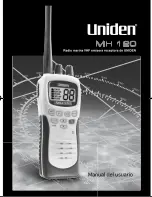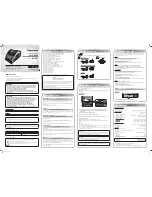
| 61
Channel charts |
Link-9 User Guide
and
51.78
. However, the use of the channels which are shared with
public correspondence shall be subject to prior agreement between
interested and affected administrations.
b) The channels of the present Appendix, with the exception of
channels 06, 13, 15, 16, 17, 70, 75 and 76, may also be used for
high-speed data and facsimile transmissions,subject to special
arrangement between interested and affected administrations.
c) The channels of the present Appendix, with the exception of
channels 06, 13, 15, 16, 17, 70, 75 and 76, may be used for direct-
printing telegraphy and data transmission, subject to special
arrangement between interested and affected administrations.
(WRC-12)
d) The frequencies in this table may also be used for radio
communications on inland waterways in accordance with the
conditions specified in No.
5.226
.
e) Administrations may apply 12.5 kHz channel interleaving on a non-
interference basis to 25 kHz channels, in accordance with the most
recent version of Recommendation ITU-R M.1084,provided:
•
it shall not affect the 25 kHz channels of the present Appendix
maritime mobile distress and safety, automatic identification
system (AIS), and data exchange frequencies, especially the
channels 06, 13, 15, 16, 17, 70, AIS 1 and AIS 2, nor the technical
characteristics set forth in Recommendation ITU-R M.489-2 for
those channels;
•
implementation of 12.5 kHz channel interleaving and
consequential national requirements shall be subject to
coordination with affected administrations. (WRC-12)
Specific notes
f) The frequencies 156.300 MHz (channel 06), 156.525 MHz (channel
70), 156.800 MHz (channel 16), 161.975 MHz (AIS 1) and 162.025 MHz
(AIS 2) may also be used by aircraft stations for the purpose of search
and rescue operations and other safety-related communication.
(WRC-07)
g) Channels 15 and 17 may also be used for on-board communications
provided the effective radiated power does not exceed 1W, and
subject to the national regulations of the administration concerned
when these channels are used in its territorial waters.
h) Within the European Maritime Area and in Canada, these
frequencies (channels 10, 67, 73) may also be used, if so required,
by the individual administrations concerned, for communication
between ship stations, aircraft stations and participating land














































